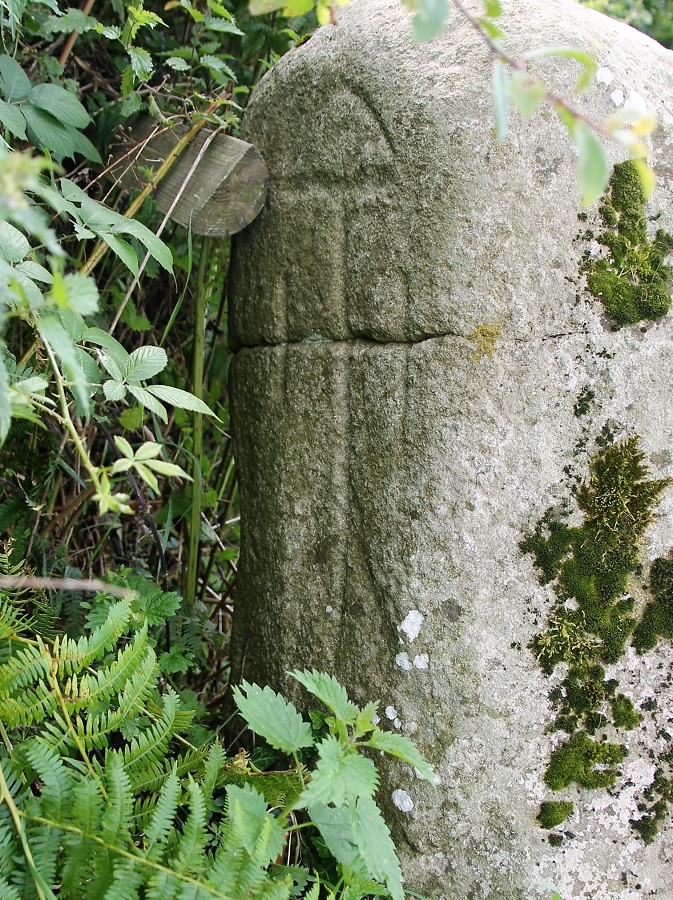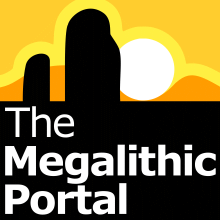Contributory members are able to log private notes and comments about each site
Sites Nesyor has logged. View this log as a table or view the most recent logs from everyone
Maen Colman Stone
Date Added: 29th Jun 2023
Site Type: Standing Stone (Menhir)
Country: Wales (Pembrokeshire)
Visited: Yes on 19th Jun 2023. My rating: Condition 3 Ambience 4 Access 3

Maen Colman Stone submitted by SumDoood on 9th Aug 2017. There are viciously stinging nettles in the hedge behind the stone.
(View photo, vote or add a comment)
Log Text: The Maen Colman, Colman's stone, is situated at Capel Colman near Boncath on a public footpath passing through Glanpwlldu farm.
The nearby church is dedicated to St Colman, one of several Irish St Colmans of the 6th or 7th century. This church was rebuilt and restored in the 1800s after falling into disrepair twice previously.
The mediaeval church was slightly to the south of the current building. Cropmarks show two circles centred on the original church, which may have marked the boundary of consecrated ground for the original church site.
Maen Colman is close to one of these circles.
Local tradition claims the stone was originally a prehistoric menhir, a single standing stone, decorated with Christian symbols in the 6th century AD and placed over the grave of St Colman.
Supposedly the stone was removed from the churchyard by a local farmer who wanted to use it as a gatepost
It seems unlikely: the stone is hardly tall enough to make a reasonable gatepost, and there is no sign of holes for hinges or catches
The carving on the front of the stone is a combination of two ancient Christian symbols.
The circle with a four-armed cross is the Celtic or sun cross, which predates Christianity.
This is combined with the Chi-Rho symbol, where the Greek letters P and X represent the first two letters of the name of Christ, the down stroke of the P forming the upright of the Celtic cross. The transverse arm of the cross is just about visible across the centre.
The back of the stone is difficult to see, being very overgrown. It was impossible to get a usable photograph.
The rough sketch is based on scrappy shots and sketches. The proportions are not quite perfect but it is a reasonable copy of the image on the back of the stone; a simple depiction of the crucifixion of Christ.
The upper part shows Christ on the cross. The lower part of the image shows two people, one on either side of the cross. This is a very traditional depiction, the figures represent Mary and St John. This particular style began to appear in the later 8th century
There is a crack in the stone across the centre of the image..
It seems unlikely that the two images were made by the same person. The person who created the imagery on the front had some skills as a stone-mason, the pattern on the back is merely simple lines incised into the stone.
This carving may have been added much later than the original design. The use of the pointed arch, as shown above the crucifix, began in the British Isles towards the end of the 12th century.
